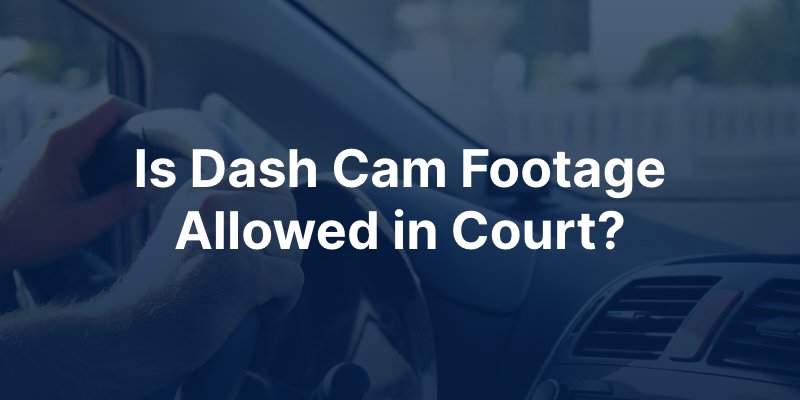Can Dash Cam Footage Be Used in Court?
Request Free ConsultationEyewitness testimony has long been key evidence used in court, including in St. Louis car accident claims; however, eyewitnesses sometimes have bias, misconceptions, and inaccurate memories of critical events, whereas video footage does not. Video—or digital images—of a car accident in progress tells the story of what occurred without the problems of human perception. Sadly, video footage is not always available in places without traffic cameras or nearby surveillance cameras, but a growing number of drivers now have dashboard cameras (dashcams) inside their vehicles. These dashcams capture and record details of the moments leading up to an accident as well as the accident itself, preserving critical evidence about the crash that helps prove fault and liability.
How Do Dash Cams Work?
Most states allow dash cam video in court, including Missouri. A survey in 2023 shows that as many as 15-20% of motorists now have dashcams inside their vehicles. Dashcams use the vehicle’s energy as a power source. Most dashcams record whenever the vehicle is in operation and many are also motion-activated so they begin recording when sensors detect motion outside of a parked vehicle. Depending on the setting and angle of the camera, a dashcam records digital images of everything within the camera’s view. They record in daytime and nighttime environments, generally producing high-quality video. Dashcam recordings continually loop, so when a dashcam runs out of memory storage, it begins recording over old footage. Additionally, most dashcam technology automatically stores and preserves video when the sensors detect a collision. Dashcam owners may upload saved digital recordings to the cloud, making them easy to preserve and share with police, insurance companies, attorneys, and in court.

How Does Dashcam Video Help In Court?
In fault-based insurance states, injury victims seeking compensation for property damage, medical expenses, lost wages, and pain and suffering must prove the other driver at fault—or mostly at fault—for an accident. Typically, this requires examining evidence like the police report, eyewitness testimony, and any available footage from traffic cameras or nearby surveillance cameras that may have captured some or all of the accident. When there’s a lack of video and reliable eyewitness testimony, the injury victim and their attorney may turn to accident reconstruction specialists who use technology to recreate the accident using available data. When one vehicle involved in an accident has a dashcam in operation, the captured video provides critical evidence which is usually admissible in court.
Does Dashcam Video Always Help?
Dashcam video is usually admissible in court but may be deemed inadmissible if the images are unclear, of poor quality, or if they were captured anywhere other than public roadways and parking lots, making them a potential privacy violation. In some cases, the camera’s angle may miss key factors contributing to an accident that takes place out of range of the camera, in which case, a judge might decide the footage is misleading or inaccurate. In addition, if you’ve been injured in a car accident and you have dashcam video of the crash, it’s always advisable to view the footage with your St. Louis injury lawyer before sending it to the police or using it as evidence in your car accident claim.

